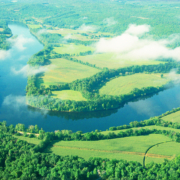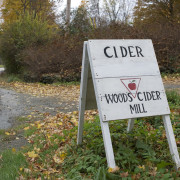Weathersfield Wetland Conserved with Upper Valley Land Trust
 A 38-acre parcel of land owned by John and Fran Wright in the Perkinsville area of Weathersfield is now permanently protected from development. The conservation easement ensuring the land’s protection was signed on Friday, December 11. The easement will be held in perpetuity by the Upper Valley Land Trust.
A 38-acre parcel of land owned by John and Fran Wright in the Perkinsville area of Weathersfield is now permanently protected from development. The conservation easement ensuring the land’s protection was signed on Friday, December 11. The easement will be held in perpetuity by the Upper Valley Land Trust.
The property has been in Mr. Wright’s family since 1796. It was passed to him through a long line of ancestors. Mr. Wright’s great-grandfather farmed the land (sheep and cattle) and his father grew up in the area. It is this lengthy history of ownership that motivated the Wrights to protect the property for future generations.
The protection of the parcel includes more than 4000 feet of frontage on Mill Brook, as well as a state mapped, Class II wetland. Route 131 runs through the parcel. In the winter, a snowmobile trail passes over the Wrights’ property, crossing the brook over a wooden bridge, which VAST maintains. The property lies between Mount Ascutney State Park and Little Ascutney Wildlife Management Area. It is about one half mile from 450 acres that were protected by UVLT on the south side of Mount Ascutney with the help of the Weathersfield Land Protection Association and the Conservation Commission.
The protected property is primarily forested. It is not in current use and has been left alone for about 50 years. Because of this, there are high quality maples throughout the parcel. According to a Connecticut River Joint Commissions report, the condition of Mill Brook is excellent, waters are clear and cold, and it supports fine wild trout habitat. The property supports an abundant amount of wildlife, including beaver, moose, deer, and an occasional bear. In addition, a sandy bank provides habitat for turtles.
An endangered plant in the State of Vermont has been identified within one mile of the Wright Wetland. Additionally there are 22 more rare, endangered or threatened species identified in the Town of Weathersfield. The preservation of this land contributes to the future of biodiversity in the region, by retaining a habitat and corridor for native plants and animals to live and travel throughout the year.



